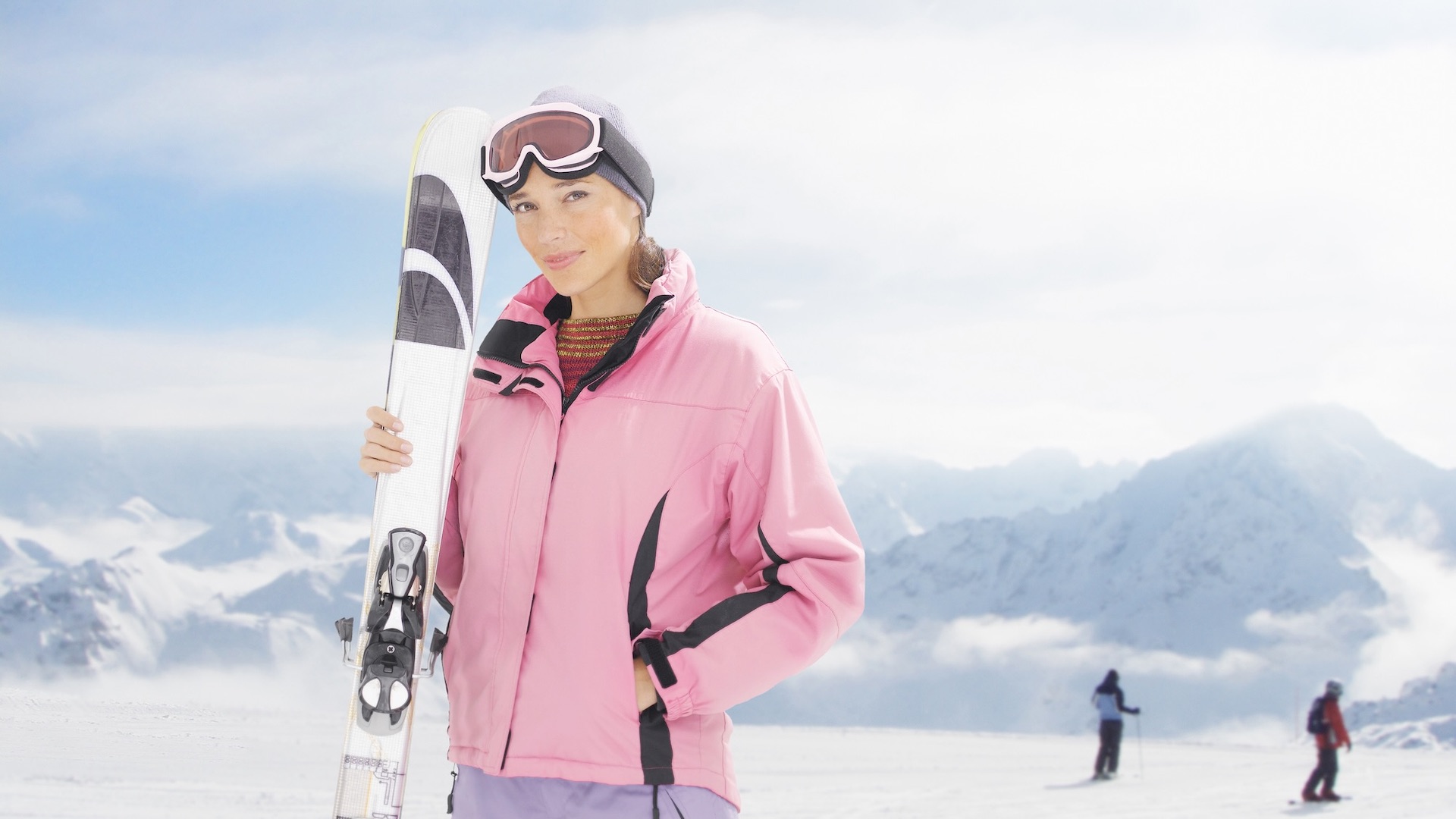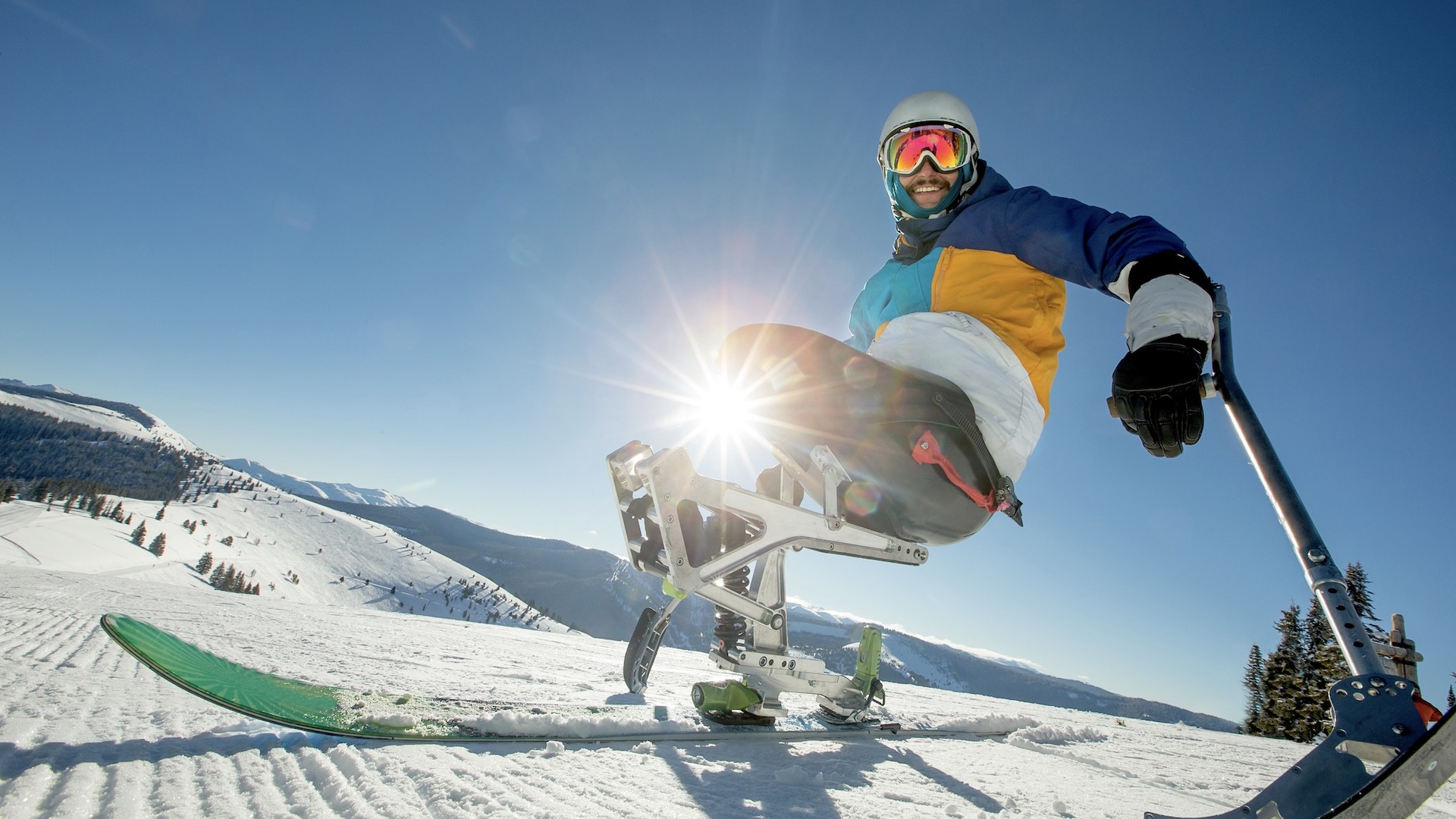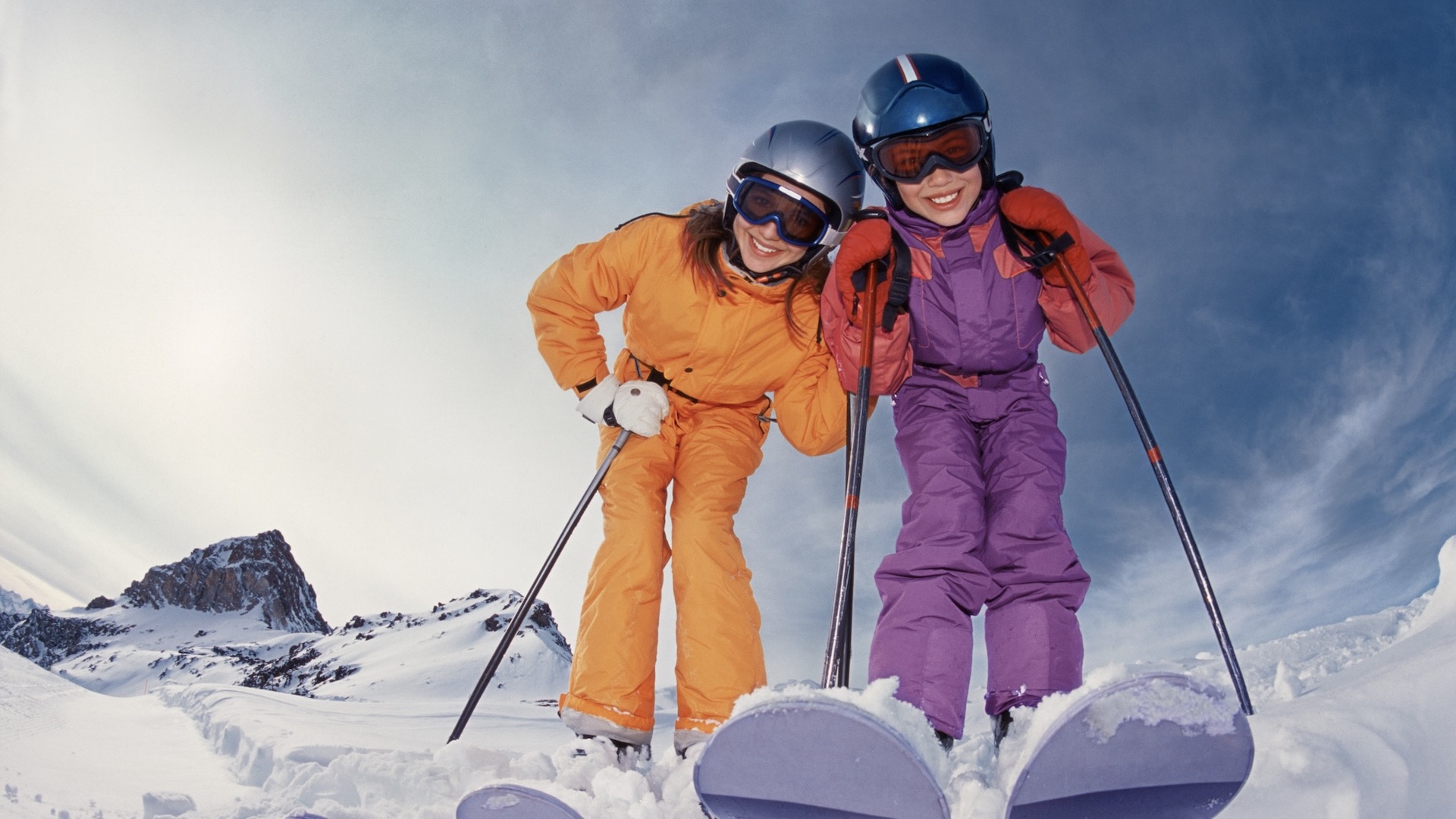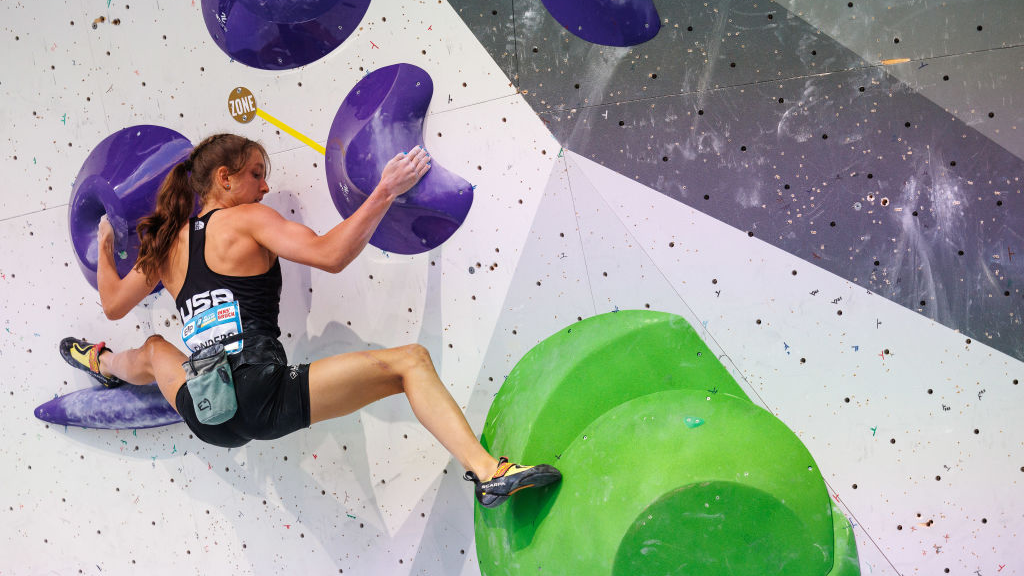Can you rely on budget ski goggles?
Prices of ski goggles vary widely so we consider whether cheaper options are worth buying

Ski goggles are an essential item of kit for different types of skiing, such as downhill skiing and back country skiing. They protect your eyes from falling snow, wind and cold air, as well as providing improved visibility in bright light or dull conditions.
But prices for ski goggles can vary widely and many people will be wondering if this is the item of gear they can buy at a more budget-friendly price. One thing that is important to note is that all good quality ski goggle lenses should be certified to cut out 100% of the harmful UVA and UVB rays. Make sure they are certified whatever the price of the goggles because this will provide proper proteciton for your eyes in sunlight.
Taking a look at our guide to the best ski goggles of 2024, the cost of purchasing the eye protection for skiing ranges from £49 for BLOC Mask MK3 and £60 for IZIPIZI Snow All Weather to £250 for the Bollé Torus Neo Snow Goggles. The next priciest is the Oakley Line Miner Snow (Jamie Anderson Series) at £137. Note that these are recommended retail prices (RRP) so it is often possible to see ski goggles sold at cheaper prices in different shops and on-line outlets, but for the purposes this article we will compare RRPs like-for-like.
Of course, it’s important to take a close at look at each pair of ski goggles. Fit is very important and because we all have different sized heads and face shapes, it is advisable to try on goggles before you buy them. This is especially true if you were glasses and, in this case, it’s worth seeking out “OTG” goggles, which are designed to fit over the top of your specs. Also check to see if the ski goggles fit with your ski helmet because a gap between the two will mean that cold air can get to the skin on your face.
Some ski goggles also come with extra lenses that can be swapped for different light conditions on the ski slopes.
Here we consider whether you can rely on budget ski goggles, or if it is worth paying extra for your essential skiing item?

What makes ski goggles so expensive?
There are a number of different factors that can push up the price of a pair of ski goggles. In the fist place, some brands appear to command higher prices. Big names in ski goggles, such as Bollé and Oakley, do have a good reputation after many years in the skiing industry and you will often see gear in the higher price bracket.
Advnture Newsletter
All the latest inspiration, tips and guides to help you plan your next Advnture!
These brands have a great deal of experience in the marketplace and many decades of building a reputation so you can expect their ski goggles to be good quality. However, you should not necessarily dismiss other brands at lower prices because they might also offer good quality.
Other factors that can make ski goggles more expensive is the research and development required to design the product, as well as the materials required to make them. For example the Oakley Line Miner Snow (Jamie Anderson Series) have a Prizm lens that is claimed to offer a clearer vision in different weather conditions.
Lenses with a mirrored coating can also cause the price to be higher.
Sometimes a new style or design will make the ski goggles pricier. SunGod Vanguards, as an example, have a look that is frameless and many skiers have come to favour this in recent years. The Vanguards were given a score of 4.5 out of five by our reviewer and are priced at £110 so they are a mid-priced set of ski goggles.
Another trend is over-sized looking ski goggles. Then again, the retro look of Vallon Freebirds could appeal to some skiers and while these goggles score 4.5 out of 5 by our reviewer they re not the cheapest on test.
Details such as OTG, extr venting, or a carry case can also add cost to the sale of ski goggles, as do goggles that come with a second lens. For example, the Bollé Torus Neo Snow Goggles have two lenses that are easily changed thanks to fixing magnets. However, it is worth noting that our reviewer gave these goggles one of the lowest scores at 3 out of 5.
If matching your ski goggles to your ski outfit matters, then you may need to pay more to find the right colour scheme.
Companies that pay attention to their impact on the environment tend to command slightly elevated prices. For example, Vallon commit to to a 1kg plastic clean-up for each pair of Freebirds ski goggles sold. They are priced at £116 a pair.

Do you even need expensive ski goggles for your activities?
Whether you need to pay more for expensive ski goggles will depend on how often you go skiing and the type of skiing you do, as well as what conditions you ski in.
If you are a keen skier who is likely to use the ski goggles on many days each year, not just for then odd day or week of skiing, then it could be worth buying more expensive pair of ski goggles made by a company that you feel you can trust. When record breaker Preet Chandi was planning to ski to the south pole, a good quality and durable pair of ski goggles would have been high on her list of priorities.
It is likely that as a skiing enthusiast you have already owned ski goggles and you know the brands that worked well and have stood the test of time. In this case, even if the ski goggles are expensive, it could be worth paying more for these because you will get good, long-term use of them.
Likewise, if you ski in all kinds of weather, you will need a pair of ski goggles that can cope in different conditions, especially the option to be able to swap lenses according to different light on the slopes.
It might be worth paying more for ski goggles with two lenses. There are also ski goggles, such as the Zeal Optics Hangfire Ski & Snowboard Goggles, that have a photochromatic lens option, which means the lens will transition in shade to cope with different weather conditions.
Technology such as Prism lenses might prove to be a good idea for keen skiers and anyone who wear glasses might want to spend more for goggles that fit well over their specs.
Other features that might be worth paying more for include good ventilation. Different brands utilise different systems for keeping ski goggles wet vented to avoid them steaming up when you sweat. If you ski many days each year, this is certainly a detail to look for and consider spending more on.
Ski goggles that have the capacity for swapping lenses, even if you need to buy an extra lens separately, could be worth paying for because most skiers will benefit form being able to change lenses according to the weather. Unless you only ski on sunny days, this is a factor that might make it worth buying a more pair expensive set of ski goggles.
Check whether the ski goggles brand offers a guarantee on the longevity of their products, too. It can be worth paying more if the brand will replace parts of the entire product should something fail.
Climate change is a major issue and some people are willing to pay more for brands that aim to reduce their impact on the environment through design and manufacture of products.

Which brands can you recommend for budget ski goggles?
There are many different brands of ski goggles on the market so for the purposes of this guide we will consider our "best of" review. At the cheaper end are the BLOC Mask MK3 at £49 and the IZIPIZI Snow All Weather at £60. The TOG24 Chamonix Cat 2 Goggles could also be considered to be at the budget end of our review at £80.
When testing the BLOC Mask MK3, our reviewer gave the ski goggles a solid four out of five score. On the plus side, the ski goggles work well if you wear glasses and they also boast good anti-fog properties.
If you have a smaller face, they will be unlikely to fit well and there is no extra lens included, although there is a choice of different lenses and you could buy extra. The ski goggles look fairly trendy, although not as stylish as more modern styles can be.
Overall, these goggles were said to be durable with a stand anti-fog performance and with a reasonable price tag. The BLOC ski goggles are not the most stylish but they are also not the least trendy looking in our review so for a solid and fuss-free first pair of goggles for new-comers to skiing they could be a good option.
The IZIPIZI Snow All Weather scored four out of five by our reviewer and have many pros, such as availability in two sizes, glasses-compatible and sold with a good all-rounder lens colour. A negative is a stiff strap.
The ski goggles will not have you standing out on the slopes for trendiness but if you are new to skiing, or you only go skiing once a year, they offer a good go-anywhere pair of ski goggles at a fairly reasonable price.
At an RRP of £80 it seems fair to include the TOG24 Chamonix Cat 2 Goggles in the more budget friendly round-up, especially when other ski goggles are priced at well over £100. Our reviewer noted positives such as a comfy strap, a fleece-lined frame and decent field of vision.
On the negative side, the goggles do not have an extra lens included, they also seem flimsier than some models and they might be too large for smaller faces.
The tinted Cat 2 lens proved to be good enough to get our reviewer through most of the weather conditions encountered on a ski holiday but if you know you will be skiing in very variable conditions, then it is probably better to buy goggles with two different lenses.
If you are looking for a trendier style of ski goggles at a more affordable price than some of the bigger brands, these TOG24 goggles do look pretty good although our reviewer gave the goggles an overall score of only three out of five.
Is it worth buying budget ski goggles?
If you are new to skiing and you are not sure if it is going to be your chosen forever sport or if the ski goggles are only going to be for on the odd day of skiing, rather than choosing to wear sunglasses, a set of more budget friendly ski goggles could be the right choice.
For skiers who plan to ski multiple times each winter season, or year after year, and in changeable conditions, it’s worth paying extra for goggles with different lenses, or, at least, the option to buy extra lenses that can be swapped in. Photochromatic lenses could also be worth spending more on.
A few things that are a big turn off when choosing ski goggles are lenses that steam up, or goggles with low levels of foam and padding, which will make the uncomfortable after many hours of wear.
You will probably have to pay more for ski goggles that are on-trend because only some companies update their products each season and reflect what is considered to be the latest “good looks”.
Goggles that have useful features, such as systems that make it easy to change lenses, may well be worth paying bit more for, too.
More tips for buying budget-friendly ski goggles
If you are set on a big name brand, you could consider buying last year’s models if they are being sold at a cheaper price or shop around for sales items.
Borrow a pair of ski goggles from a friend, or as many friends as you can, to se what style might suit you.
If you wear glasses, you could consider swapping to contact lenses when skiing so you have more options when it comes to buying ski goggles and not just OTG ski goggles.
A set of ski goggles with a photochromatic lens could be a good choice if you do not want to change lenses on the slopes.
Make sure you keep your ski goggles in a protective bag or case when not in use to prevent them form becoming scratched.
- The best ski socks: tested for warmth, protection and comfort

Fiona Russell is a widely published adventure journalist and blogger, better known as Fiona Outdoors. She is based in Scotland and is an all-round outdoors enthusiast with favorite activities including trail running, mountain walking, mountain biking, road cycling, triathlon and skiing (both downhill and backcountry). Aside from her own adventures, Fiona's biggest aim is to inspire others to enjoy getting outside and exploring, especially through her writing. She is also rarely seen without a running skort! Find out more at Fiona Outdoors.
